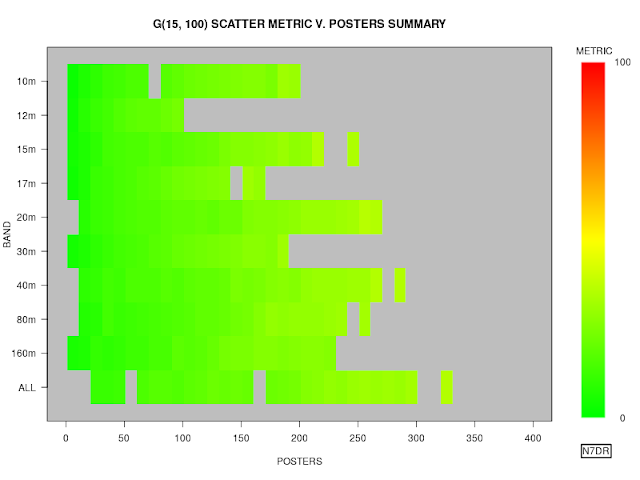I here show various plots of the G(15, 100) grid-based scatter metric, G(15, 100), for the Reverse Beacon Network (RBN), using data from the inception of the RBN up to the end of 2020.
As in the past I note that a reasonable a priori
case can be made on the basis of propagation characteristics that
somewhat different metrics in the G(Δ, n) series might be better
representations of RBN coverage on some of the bands. However, rather
than make this into a full-scale research project, I shall here simply continue to use
the G(15, 100) metric on the basis that it seems "good enough" on all
bands.
RBN Posting Stations as a Function of Time
We begin by
looking simply at how the number of per-band posters to the RBN has
varied since the RBN's inception. (NB Throughout this post, we ignore
posters for which the location is not recorded by the RBN; plots for which the abscissa is time show one datum per month.)
First, a plot of the total number of posters as a function of time:
This can be more compactly represented, along with similar per-band data for 160m through 10m (excluding 60m):

G(15, 100) as a Function of Time
Turning now to the geographical distribution of the posting stations, we can display the mensal values of G(15, 100) in a similar manner:
G(15, 100) as a Function of the Number of Posters
Finally, we can combine the mensal values of G(15, 100) and the number of posters. Firstly, including all bands:





No comments:
Post a Comment
Note: Only a member of this blog may post a comment.